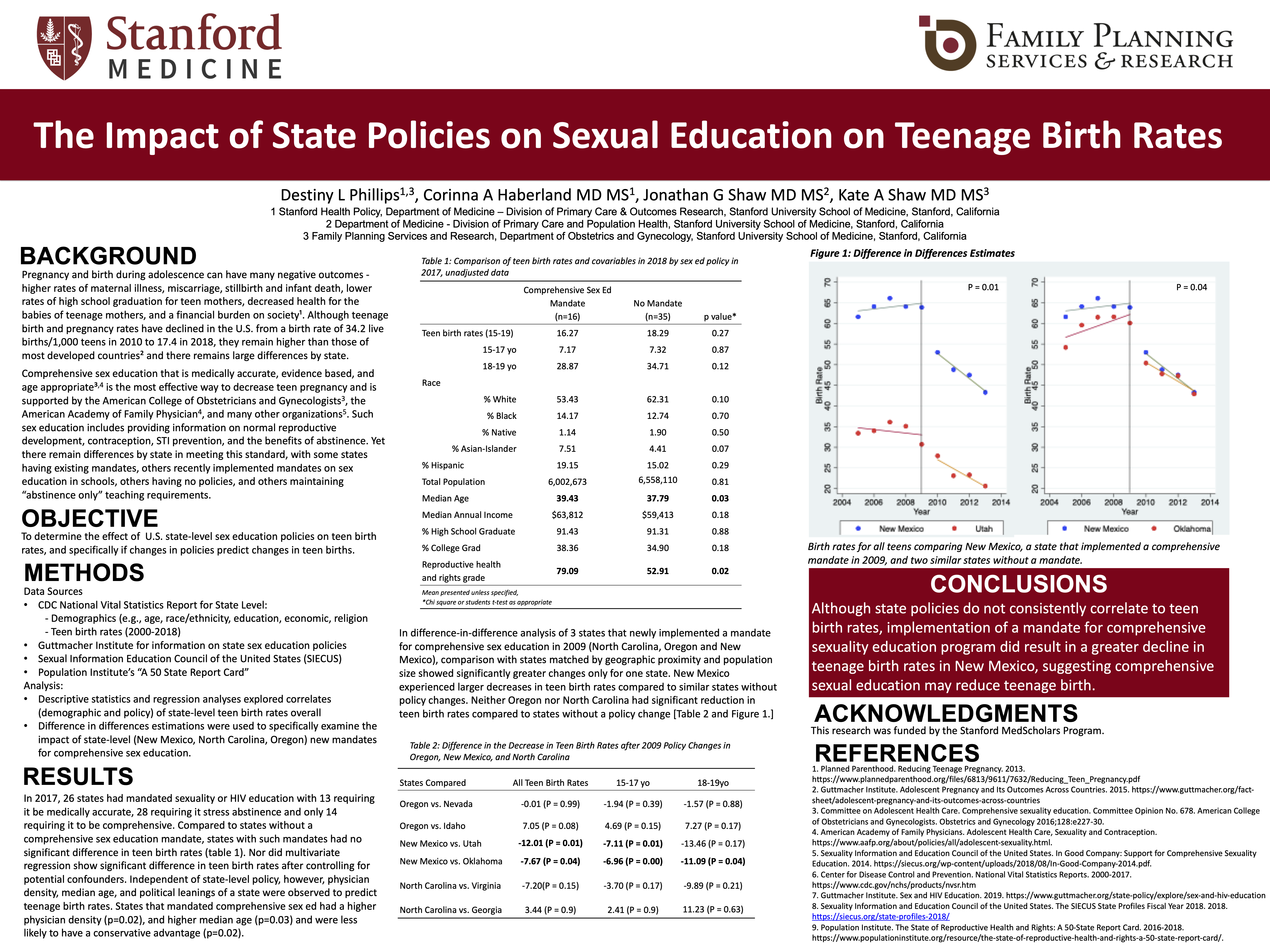SRFP101: The Impact of State Policies on Sexual Education on Teenage Birth Rates
Destiny Phillips, BA; Jonathan Shaw, MD, MS; Kate Shaw
Abstract
Objective: We sought to determine the effect of state sex education policies on teen birth rates.
Study Design: We performed a retrospective observational cross-sectional study of 50 states and the District of Columbia. Birth rate data were obtained from the National Vital Statistics Reports and state policy information from the Guttmacher Institute. Descriptive statistics and regression analyses were performed to understand the effect of various policies. We used difference in differences estimation to determine if specific state sexual education policy changes impacted rates relative to other states that did not implement similar educational policy changes.
Main Outcome Measures: Teen birth rates
Results: In 2017, while states that stressed abstinence-only education had higher birth rates than states that did not (19.18/1000 versus 15.72/1000 respectively, p=0.05), the difference was no longer significant after controlling for confounding variables in the multivariate regression model. However, difference in difference models demonstrated that New Mexico’s comprehensive sexual education policy change in 2009 had larger decreases in teenage birth rates than similar states without changes in policy.
Conclusion: Although state policies do not predict teenage birth rates, implementation of a mandate for comprehensive sexual education program may result in a greater decline in teenage birth rates, further supporting comprehensive sexual education as a way to prevent unintended teenage birth.

Jack Westfall
jwestfall@aafp.org 11/21/2021This is a very important topic and research study. Nice work. Thanks